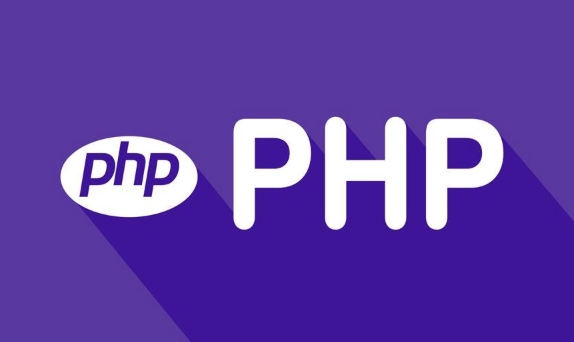The methods to run scripts using the PHP CLI include: 1. Make sure that PHP is installed and environment variables are configured, and run php script.php to execute scripts; 2. You need to manually add PHP path to environment variables on Windows, and Ubuntu and other systems can install php-cli packages; 3. Common parameters such as -a (interactive mode), -r (execution code), -l (synchronization check), and -S (start the server); 4. Get command line parameters through $argc and $argv, or use getopt() to handle complex options; 5. Actual applications include timing tasks, data import and export, command line tool development and unit testing. After mastering these basic operations, PHP CLI can become an efficient and practical development aid.

Using PHP CLI (command line interface) is actually not difficult, especially when you are already familiar with PHP's web development, it is more like a "change-run" PHP. CLI is mainly used for executing scripts, debugging code, timing tasks, automated deployment and other scenarios, and does not need to rely on browsers or HTTP requests.

How to run a PHP script?
The most basic usage is to run the .php file through the command line. For example:
php script.php
The premise is that your system has PHP installed and the php command is available in environment variables. If it is not configured properly, you can first run which php or php -v to confirm whether the installation is successful.

- If you are developing on Windows, you may need to manually add the PHP path to the system environment variables.
- Some servers (such as Ubuntu) only install Apache module by default and do not have CLI extensions, so they need to be reinstalled with
sudo apt install php-cli.
What are the commonly used parameters under CLI?
The PHP CLI provides some common parameters to control how scripts run. Here are some more common ones:
-
-a: Enter interactive mode, suitable for temporary testing of some small functions. -
-r: Run a piece of PHP code directly, such as:php -r "echo 'Hello World';"
-
-l: Syntax checking, it will not execute code, it will just help you see if there are any syntax errors:php -l script.php
-
-S: Start a simple built-in web server suitable for local testing:php -S localhost:8000
These parameters are very practical when debugging or writing tool scripts, especially -r and -l , which can quickly verify logic and syntax.

How to get the parameters passed in the command line?
The PHP CLI supports getting command line parameters through $argc and $argv .
For example:
php script.php foo bar --option=1
In the script you can handle it like this:
<?php
var_dump($argv);
// Output: array(3) { [0]=> string(10) "script.php" [1]=> string(3) "foo" [2]=> string(3) "bar" } Note that the first parameter is always the script name itself, and the following is what is passed in by the user. If you want to support more complex parameter parsing (such as parameters with options), you can use the getopt() function:
$options = getopt("f:v::", ["file:", "verbose::"]); This allows you to identify parameter formats such as --file=filename or -f filename .
Examples of practical application scenarios
- Timed tasks : In conjunction with Linux crontab, regularly clean logs and backup data.
- Data import and export script : For example, importing a database from CSV is faster and more stable than web forms.
- Command line tool development : For example, Laravel's Artisan command and Composer are also based on the PHP CLI.
- Unit testing : Many testing frameworks (such as PHPUnit) are run through the command line.
This type of script usually does not need to consider page rendering, and the logic is more focused and more efficient.
Basically that's it. After mastering the basic usage, you will find that PHP CLI is a very practical helper. Although it looks simple, many advanced features cannot be separated from it.
The above is the detailed content of How to use the PHP CLI (Command Line Interface)?. For more information, please follow other related articles on the PHP Chinese website!

Hot AI Tools

Undress AI Tool
Undress images for free

Undresser.AI Undress
AI-powered app for creating realistic nude photos

AI Clothes Remover
Online AI tool for removing clothes from photos.

Clothoff.io
AI clothes remover

Video Face Swap
Swap faces in any video effortlessly with our completely free AI face swap tool!

Hot Article

Hot Tools

Notepad++7.3.1
Easy-to-use and free code editor

SublimeText3 Chinese version
Chinese version, very easy to use

Zend Studio 13.0.1
Powerful PHP integrated development environment

Dreamweaver CS6
Visual web development tools

SublimeText3 Mac version
God-level code editing software (SublimeText3)
 PHP Variable Scope Explained
Jul 17, 2025 am 04:16 AM
PHP Variable Scope Explained
Jul 17, 2025 am 04:16 AM
Common problems and solutions for PHP variable scope include: 1. The global variable cannot be accessed within the function, and it needs to be passed in using the global keyword or parameter; 2. The static variable is declared with static, and it is only initialized once and the value is maintained between multiple calls; 3. Hyperglobal variables such as $_GET and $_POST can be used directly in any scope, but you need to pay attention to safe filtering; 4. Anonymous functions need to introduce parent scope variables through the use keyword, and when modifying external variables, you need to pass a reference. Mastering these rules can help avoid errors and improve code stability.
 How to handle File Uploads securely in PHP?
Jul 08, 2025 am 02:37 AM
How to handle File Uploads securely in PHP?
Jul 08, 2025 am 02:37 AM
To safely handle PHP file uploads, you need to verify the source and type, control the file name and path, set server restrictions, and process media files twice. 1. Verify the upload source to prevent CSRF through token and detect the real MIME type through finfo_file using whitelist control; 2. Rename the file to a random string and determine the extension to store it in a non-Web directory according to the detection type; 3. PHP configuration limits the upload size and temporary directory Nginx/Apache prohibits access to the upload directory; 4. The GD library resaves the pictures to clear potential malicious data.
 Commenting Out Code in PHP
Jul 18, 2025 am 04:57 AM
Commenting Out Code in PHP
Jul 18, 2025 am 04:57 AM
There are three common methods for PHP comment code: 1. Use // or # to block one line of code, and it is recommended to use //; 2. Use /.../ to wrap code blocks with multiple lines, which cannot be nested but can be crossed; 3. Combination skills comments such as using /if(){}/ to control logic blocks, or to improve efficiency with editor shortcut keys, you should pay attention to closing symbols and avoid nesting when using them.
 How Do Generators Work in PHP?
Jul 11, 2025 am 03:12 AM
How Do Generators Work in PHP?
Jul 11, 2025 am 03:12 AM
AgeneratorinPHPisamemory-efficientwaytoiterateoverlargedatasetsbyyieldingvaluesoneatatimeinsteadofreturningthemallatonce.1.Generatorsusetheyieldkeywordtoproducevaluesondemand,reducingmemoryusage.2.Theyareusefulforhandlingbigloops,readinglargefiles,or
 Tips for Writing PHP Comments
Jul 18, 2025 am 04:51 AM
Tips for Writing PHP Comments
Jul 18, 2025 am 04:51 AM
The key to writing PHP comments is to clarify the purpose and specifications. Comments should explain "why" rather than "what was done", avoiding redundancy or too simplicity. 1. Use a unified format, such as docblock (/*/) for class and method descriptions to improve readability and tool compatibility; 2. Emphasize the reasons behind the logic, such as why JS jumps need to be output manually; 3. Add an overview description before complex code, describe the process in steps, and help understand the overall idea; 4. Use TODO and FIXME rationally to mark to-do items and problems to facilitate subsequent tracking and collaboration. Good annotations can reduce communication costs and improve code maintenance efficiency.
 Quick PHP Installation Tutorial
Jul 18, 2025 am 04:52 AM
Quick PHP Installation Tutorial
Jul 18, 2025 am 04:52 AM
ToinstallPHPquickly,useXAMPPonWindowsorHomebrewonmacOS.1.OnWindows,downloadandinstallXAMPP,selectcomponents,startApache,andplacefilesinhtdocs.2.Alternatively,manuallyinstallPHPfromphp.netandsetupaserverlikeApache.3.OnmacOS,installHomebrew,thenrun'bre
 How to access a character in a string by index in PHP
Jul 12, 2025 am 03:15 AM
How to access a character in a string by index in PHP
Jul 12, 2025 am 03:15 AM
In PHP, you can use square brackets or curly braces to obtain string specific index characters, but square brackets are recommended; the index starts from 0, and the access outside the range returns a null value and cannot be assigned a value; mb_substr is required to handle multi-byte characters. For example: $str="hello";echo$str[0]; output h; and Chinese characters such as mb_substr($str,1,1) need to obtain the correct result; in actual applications, the length of the string should be checked before looping, dynamic strings need to be verified for validity, and multilingual projects recommend using multi-byte security functions uniformly.
 Learning PHP: A Beginner's Guide
Jul 18, 2025 am 04:54 AM
Learning PHP: A Beginner's Guide
Jul 18, 2025 am 04:54 AM
TolearnPHPeffectively,startbysettingupalocalserverenvironmentusingtoolslikeXAMPPandacodeeditorlikeVSCode.1)InstallXAMPPforApache,MySQL,andPHP.2)Useacodeeditorforsyntaxsupport.3)TestyoursetupwithasimplePHPfile.Next,learnPHPbasicsincludingvariables,ech






